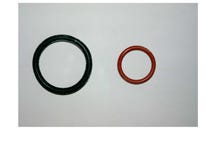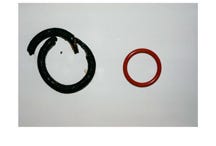LIM materials boost chemical resistance
Wide-ranging temperature stability coupled with chemical resistance superior to typical fluoroelastomers and fluorosilicones are some of the benefits of the line of perfluoropolyether-based LIMS (liquid injection molding system) materials that Shin-Etsu Silicones of America (Akron, OH) has recently reconfigured.
December 15, 2009
Wide-ranging temperature stability coupled with chemical resistance superior to typical fluoroelastomers and fluorosilicones are some of the benefits of the line of perfluoropolyether-based LIMS (liquid injection molding system) materials that Shin-Etsu Silicones of America (Akron, OH) has recently reconfigured.
|
The upgraded Shin-Etsu Sifel 3000 Series combines a perfluoropolyether backbone with a terminal silicone cross-linking group. The result is a fluoroelastomer that maintains its elasticity even at -58ºF and is resistant to fuels, synthetic oils, amine oil additives, and hydrocarbon polar solvents. The photo sequence shows a Sifel gasket (red) and a fluoroelastomer unit (black) as molded, and after 9 and 24 hours of immersion in butylamine.
Extended use is also possible up to 400ºF. Electrical properties are good as well (volume resistivity of 104G·m, BDV of 27KV/mm, and dielectric constant of 3.2 at 50 Hz). Sifel generally cures at 302ºF in just 1 minute with a shrink rate typically ranging from 2.2%-2.6%. The Sifel line was originally introduced about two years ago. —[email protected]
About the Author(s)
You May Also Like





